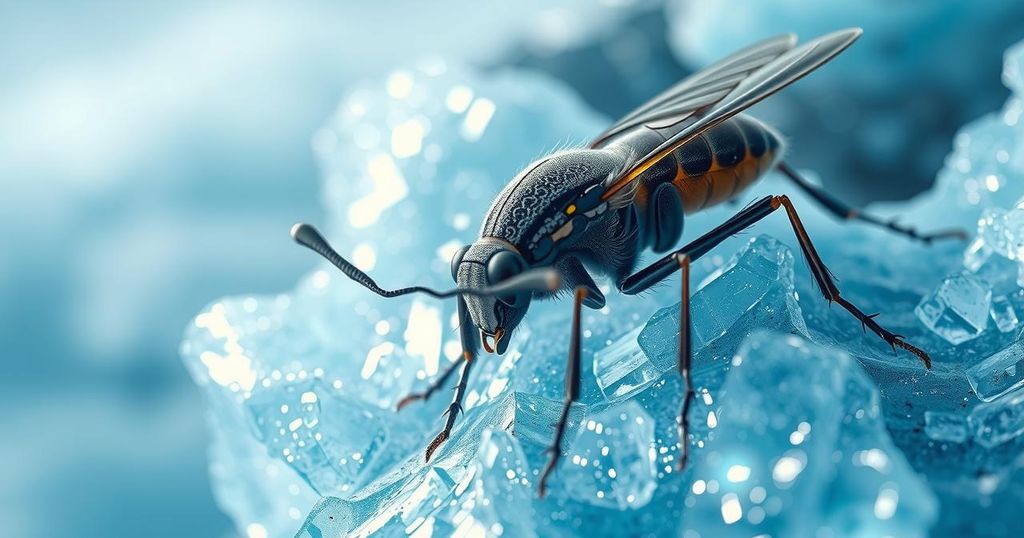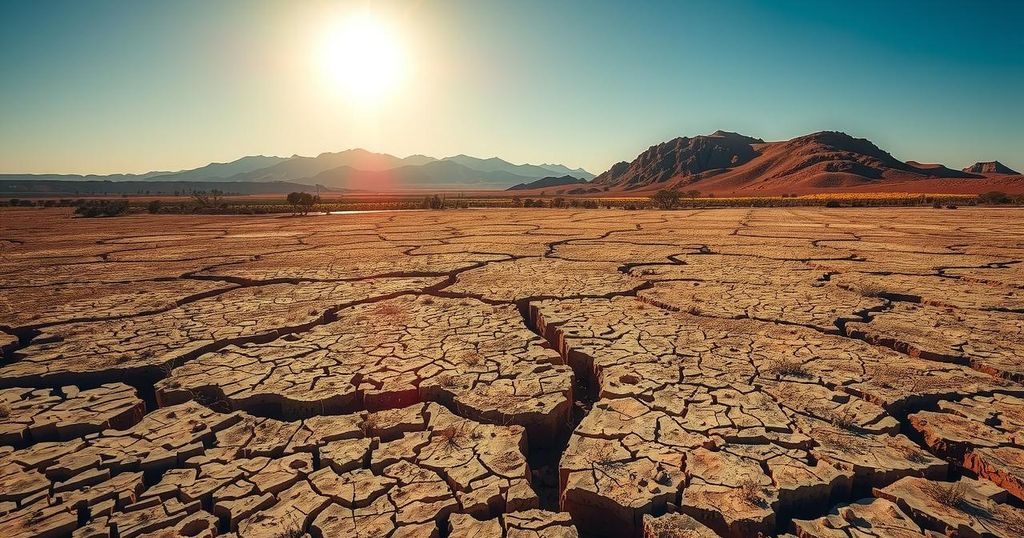Chile’s Patagonian Ice Dragon Faces Threats from Climate Change
The Patagonian Ice Dragon, a unique insect from Chile’s glaciers, is endangered due to climate change. Research led by Maribet Gamboa aims to preserve this species and its habitat by studying its adaptive genetics. Rediscovered after being thought extinct, it serves as an indicator of water quality and glacier health.
The Patagonian Ice Dragon, a remarkable insect endemic to Chile, uniquely thrives within the frigid conditions of glaciers, subsisting on algae and bacteria. Measuring approximately 15 millimeters, this wingless black insect, characterized by its long antennae, is now classified as an endangered species due to the ongoing effects of climate change, which are precipitating the loss of glaciers.
Under the leadership of Maribet Gamboa, a researcher from UCSC University, a significant study is being conducted to ensure the preservation of both the Patagonian Ice Dragon and its glacier habitat. The initiative involves analyzing environmental conditions and the genetic adaptations of the insect to survive in its extreme ecosystem.
Originally identified in the 1950s and thought to be extinct until its rediscovery in 2001, the Patagonian Ice Dragon can inhabit depths of up to 40 meters in the glacial environment. Its presence serves as an indicator of water quality, as it filters organic matter, dust, and bacteria, thereby highlighting the health of the surrounding glacial waters.
Gamboa anticipates that the research will allow the Patagonian Ice Dragon to serve as a significant marker for glacial health amid global warming. “It’s a combination of studying the dragon and how climate change is affecting glaciers and its habitat,” she stated, suggesting that understanding these dynamics could position the insect as a crucial sentinel for monitoring climate change impacts in the area.
In summary, the Patagonian Ice Dragon plays an essential role in its glacial environment, yet faces significant threats from climate change. Ongoing research led by Maribet Gamboa aims to gather vital data on both the insect and its habitat, thus enhancing efforts to monitor and potentially mitigate the impacts of global warming on these crucial ecosystems. The future of the Patagonian Ice Dragon is intricately linked to the fate of its glacial habitat, emphasizing the need for immediate conservation efforts.
Original Source: www.usnews.com




Post Comment